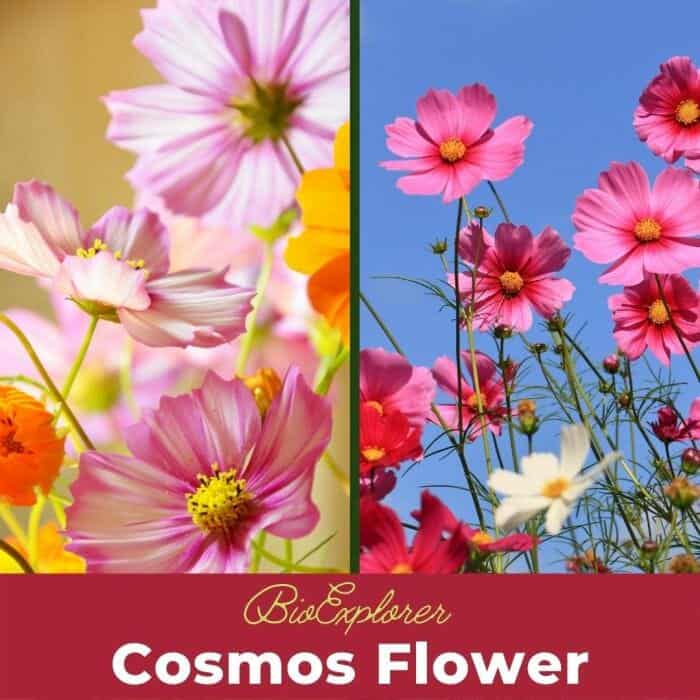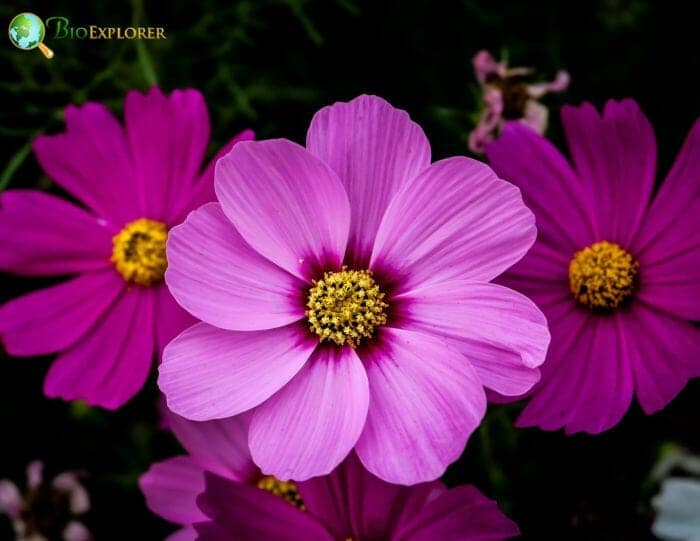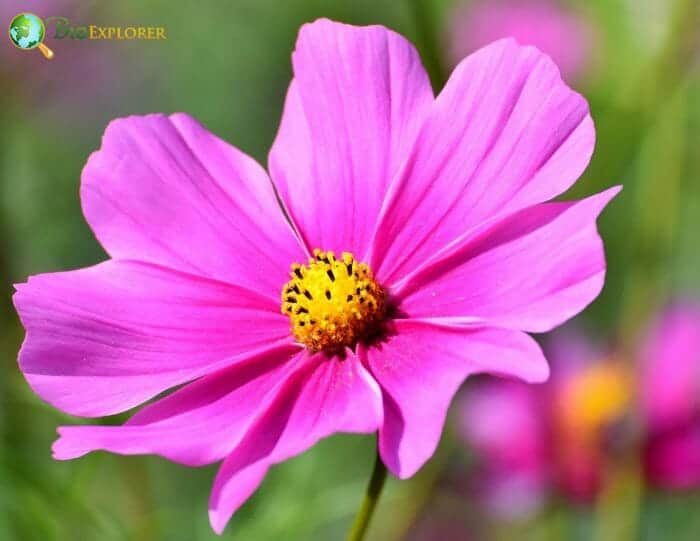
Cosmos are annual flowering plants with brightly colored, Daisy-like blooms that are borne on long, slender stems. They bloom in the summer months and attract butterflies, bees, and birds to your garden.

Native to Mexico, Cosmos (Cosmos bipinnatus and Cosmos sulphureus) are tall, airy plants bearing daisy-like flowers in shades of pink, white, orange, and red. Their finely divided foliage gives them a delicate, ferny appearance.
The name “cosmos” comes from the Greek word meaning “order” or “harmony“, inspired by the flower’s perfectly symmetrical petals. Mexican farmers grew cosmos as ornamental plants long before they spread globally. They flourish in poor soils, reflecting their origins in Mexico’s semi-wild fields. Cosmos are culturally linked to Dia de los Muertos (Day of the Dead) decorations due to their late summer to fall blooming.
Cosmos is a species of flowering in the Asteraceae (sunflower) family native to the meadowland and scrubland of Mexico, where most species are found. While there are 20 recognized cosmos species[1], two annuals, Cosmos bipinnatus, and Cosmos sulphureus, are best known to home gardeners.

Cosmos are annual plants or perennial herbaceous plants that reach 0.3 to 2 m (1 to 6 ft). The leaves are bipinnateWhat is bipinnate?Twice pinnately compound., pinnate, or simple and arranged in opposing pairs.

The flowers are formed in a spike with a ring of wide radial flowers and a center of disc flowers. The color of the flower varies widely between the different species. Flower colors are maroon, white, yellow, red, orange, and pink.

The genus includes many ornamental plants that are popular in gardens. Therefore, many cultivars and hybrids have been named and selected.












